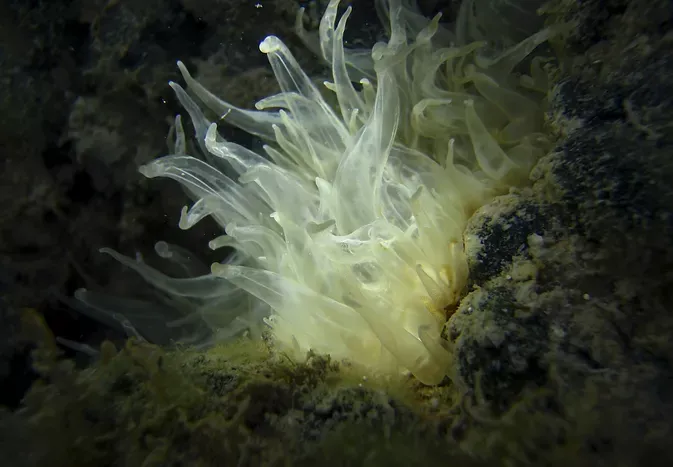Eliminating Aiptasia Anemones From Saltwater Aquariums
Updated on 04/26/24

Eradicating the Menace: A Comprehensive Guide to Eliminating Aiptasia Anemones from Saltwater Aquariums
Introduction
Aiptasia anemones, with their vibrant colors and alluring appearance, can be a nuisance in saltwater aquariums. Their aggressive nature and rapid reproduction rate make them a threat to the health and aesthetics of your aquatic ecosystem. Eliminating aiptasia can be challenging, but with the right approach and a bit of patience, it is possible to rid your tank of these unwelcome pests.
Understanding Aiptasia Anemones
Aiptasia anemones belong to the genus Aiptasia and are characterized by their columnar body, adhesive foot, and tentacles. They are found in various colors, including green, brown, and red. Aiptasia anemones are opportunistic feeders, preying on small invertebrates and zooplankton.
Their primary method of reproduction is through pedal laceration, where they detach fragments of their foot that develop into new anemones. This rapid reproduction rate makes it challenging to control their population in aquariums.
Consequences of Aiptasia Infestation
Aiptasia anemones can have several negative impacts on your saltwater aquarium:
* Coral Competition: Aiptasia anemones compete with corals for space and resources, making it difficult for corals to thrive.
* Stinging: Aiptasia anemones can sting other invertebrates, potentially causing harm or even death.
* Nutrient Depletion: Aiptasia anemones filter feed on zooplankton, removing valuable nutrients from the water column that could be beneficial to other organisms.
* Aesthetically Unpleasing: Aiptasia anemones' invasive growth can detract from the beauty of your tank, creating an unsightly appearance.
Effective Elimination Methods
Eliminating aiptasia anemones requires a multi-pronged approach, often involving a combination of manual removal, chemical treatment, and biological control.
Manual Removal
* Physical Removal: Using tweezers or forceps, carefully remove aiptasia anemones by grasping them at the base and pulling them out. Ensure to remove the entire anemone, including the foot, to prevent regrowth.
* Hot Water Injection: A targeted injection of hot water directly into the anemone can kill it without harming nearby organisms. Use a syringe and carefully inject boiling water into the anemone's mouth or body cavity.
Chemical Treatment
* Hydrogen Peroxide: A solution of 3% hydrogen peroxide can be applied directly to the anemone using a pipette or syringe. Allow the hydrogen peroxide to remain in contact with the anemone for 30 seconds before removing it with a turkey baster.
* Aiptasia-X: This commercial product contains a blend of chemicals specifically formulated to kill aiptasia anemones. Follow the manufacturer's instructions for use and apply the product directly to the anemones.
Biological Control
* Copperband Butterflyfish: Copperband butterflyfish (Chelmon rostratus) are known for their appetite for aiptasia anemones. Introducing one or two copperbands into your tank can effectively control and eliminate aiptasia populations.
* Berghia Nudibranch: Berghia nudibranchs (Berghia verrucicornis) are specialized predators that feed exclusively on aiptasia anemones. Adding a few Berghia nudibranchs to your tank can provide long-term control of aiptasia infestations.
Preventive Measures
To prevent future aiptasia infestations, follow these preventive measures:
* Quarantine New Corals: Avoid introducing aiptasia anemones into your tank by quarantining new corals for several weeks before adding them to the main system.
* Regular Tank Maintenance: Perform regular water changes and clean your tank to remove any aiptasia fragments or larvae.
* Avoid Overfeeding: Excess nutrients in the water column can encourage aiptasia growth. Avoid overfeeding your tank and perform regular nutrient export measures.
Conclusion
Eliminating aiptasia anemones from saltwater aquariums requires patience and a combination of effective methods. By understanding their biology, utilizing proven elimination techniques, and implementing preventive measures, you can successfully restore your tank to a healthy and visually appealing ecosystem. Remember, with the right approach and persistence, you can overcome the aiptasia challenge and create a thriving underwater haven for your marine life.
Explore More Pets

Freshwater Aquarium Filters
How to Deal With Cloudy Aquarium Water

Saltwater Aquarium Filters
How Do You Remove Chloramines From Tap Water?

Freshwater Aquariums & Habitat
Can I Keep My Koi Fish Inside?

Saltwater Aquariums & Habitat
14 Best Floating Plants for Your Aquarium

Freshwater Fish Health
How to Treat Ich on Freshwater Fish

Saltwater Fish Health
Fin Rot in Aquarium Fish

Freshwater Aquarium Filters
How to Do Aquarium Water Changes

Saltwater Fish Health
How Do Fish Get Parasites?